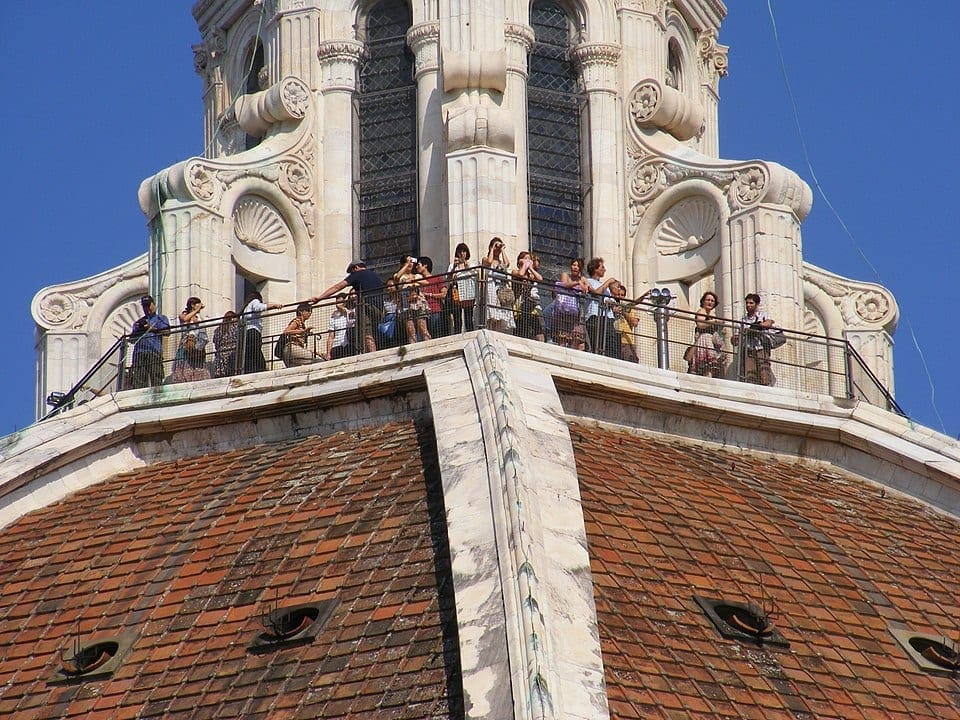
Florence is the capital city of Tuscany, a region of Italy. It’s said to be one of the most populated and most touristed cities in the area. What attracts the international traveler to Florence is the art, architecture, and the churches here. Firenze, as it’s known in these parts, is also considered to be the birthplace of the Renaissance. Read on for my complete Florence travel guide!
History
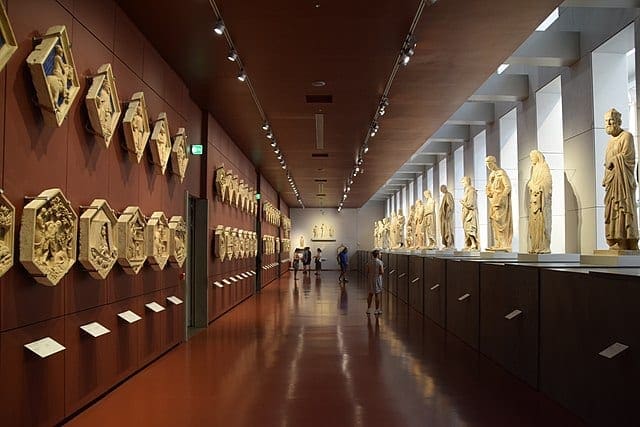
Florence’s history is as rich as its environs. The city has had a Roman past and a period where the merchant class of the region had taken over. It ushered in the rebirth of Italian art in the 15th century. It has known what it’s like to be a duchy. Florence has also been run by the Spanish, Austrians & French before it became a part of the Kingdom of Italy. Florence even played the capital of Italy for a short span of time.
The city has experienced the birth and growth of renowned artists and sculptors and gone through floods and even damage from World War II.
With all that in its history, there is much to see and do in Florence, all of which is included in this Florence travel guide.
What to see and do in Florence
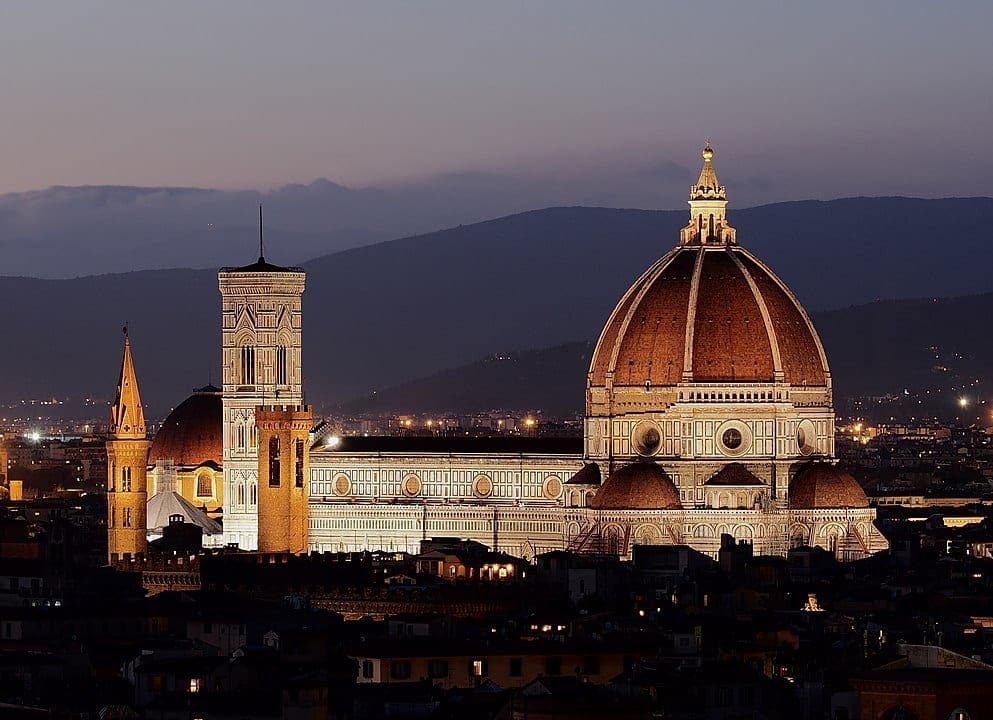
Florence might be a small city but it’s packed with so much art, most of which are world-famous masterpieces. There’s so much artistry everywhere – both indoors and outdoors. Indoor art can be seen in the form of murals, sculptures, and religious art in the churches, church museums, other famous museums & palazzos. Florence’s outdoor art is in the form of sculptures on external walls and statues in public places & around fountains. You can also see outdoor art in the architecture of the Duomo, the cathedrals & chapels and palaces of this city that attract visitors from all over the world.
The city of Florence itself is a work of art. Go atop the dome of the Basilica, Giatto’s Bell Tower, Tower of Arnolfo’s, or to Piazzale Michelangelo and you will see its red roofs, its domes, garden areas and the Arno gracefully flowing through the city. Even the bridges that connect the north and south sides of the river are a pretty sight.
Other things to do in Florence that are listed in this Florence travel guide include shopping, eating your way into Tuscan cuisine, and trying out Florentine special dishes.
For more options of what to do in Florence, check out my article on the Top 10 Things to Do in Florence!
Shopping
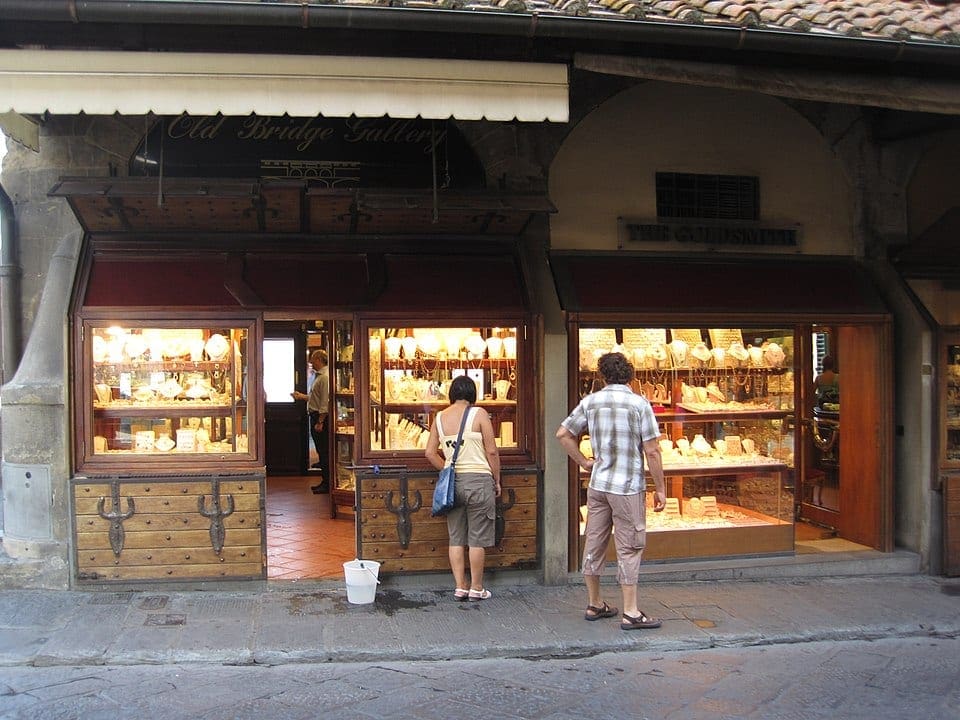
As for the things to shop for while in Florence, there’s Tuscan wine, leather products, jewelry, and high-end clothes and shoes.
Tuscany, the area that Florence is the capital of, is a well-known wine-growing area. You cannot go wrong choosing to take a bottle or two of high-quality red wine for yourself and your friends & family back home!
Leather is another big industry here. If you want to try a hand at bargaining or would like to pick up a few leather souvenirs, go to the leather market by San Lorenzo Market. This is where you will find the not-so-pricey stuff. But say you want to pick up better-quality, made-in-Florence leather, then you might want to go to the Santa Croce area.
If you’d like to take back some Florentine jewelry, browse the shops on Ponte Vecchio — the covered bridge over the Arno River. You could do so during your trip to or from the Oltrarno side.
There’s no forgetting the fact that the area saw the birth and rise of many big Italian labels. As such, it might be fun to shop for something Ferragamo or Pucci while you are here. Gucci, Prada, Armani, Bulgari, all have showrooms here. Via de’ Tornabuoni is where to go for your upscale shopping.
Or, you could take a trip out of the city and into The Mall, the luxury outlets that are around an hour’s drive from the city center.
What to eat

What to eat is an important part of my Florence travel guide! Mercato Centrale, Florence’s own central market has food courts that treat your taste buds to some of the local favorites, all prepared with the freshest ingredients. After all, it’s located within the market that sells fresh produce and meat.
You’ve probably heard that you can find some of the best gelatos in Florence. And that’s no rumor. They say Florence was the birthplace of gelato! You’ll find lots of gelaterias all over the city. And you don’t want to skip the opportunity to taste Florentine Gelato. Gelateria dei Neri, Perche no & Venchi are some of the more popular places to go pick your scoops.
Another dessert to try while you are here is the Schiacciata Fiorentina, a traditional cake topped with powdered sugar. You’ll find it in plenty during carnival season.
To further explore the cuisine of Florence you might want to try their famous 2-inch thick T-bone steak. They call it Bistecca alla Fiorentina. Also taste-worthy is Peposo alla Fiorentina – a peppery meat dish cooked in wine.
You might also want to try some delicious pasta, crostini and sandwiches with some clear Tuscan influence. Other much-recommended food items in Florence are tripe sandwiches and paninis from one of All’Antico Vinaio’s joints.
To find some great restaurants in Florence, check out my article on the Best Restaurants in Florence!
Geography
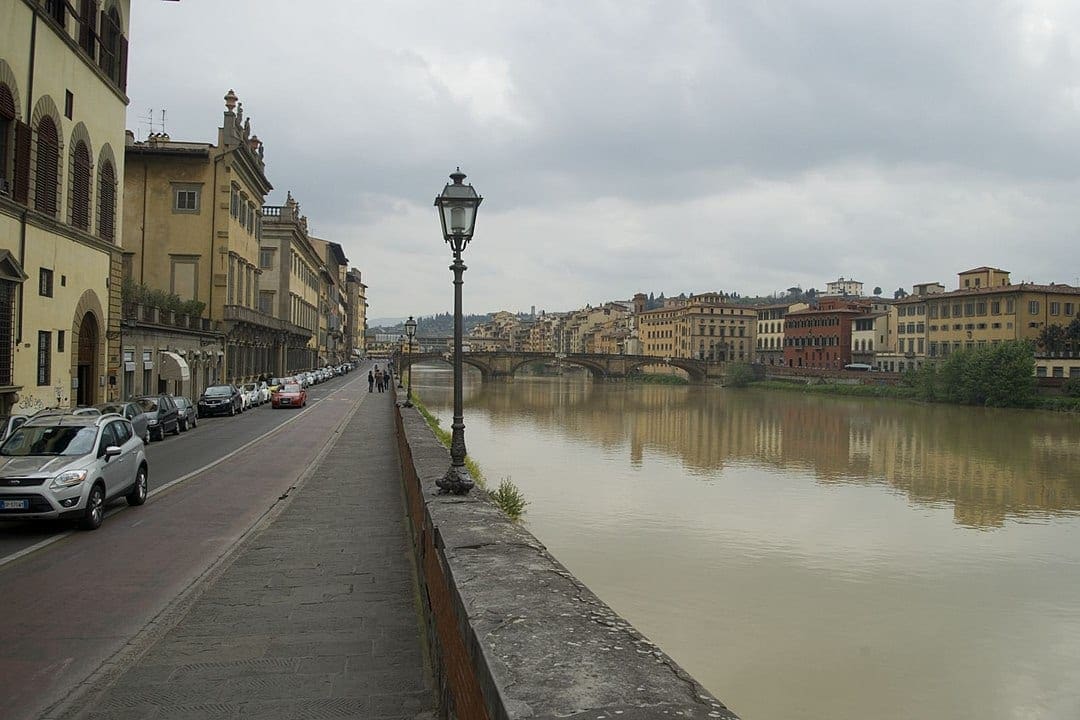
Situated in the picturesque Tuscany region, Florence lies at the foothills of the Apennine Mountain Range and is around 60 miles away from the Tuscan Coast.
This town known for its medieval art, took shape on either side of the Arno River. The Arno, which has its origins in the Apennines is an important river in these parts of the country. In modern Italy, the river also seems to separate the historical, touristy part of town from the calmer residential areas of Florence.
Transportation
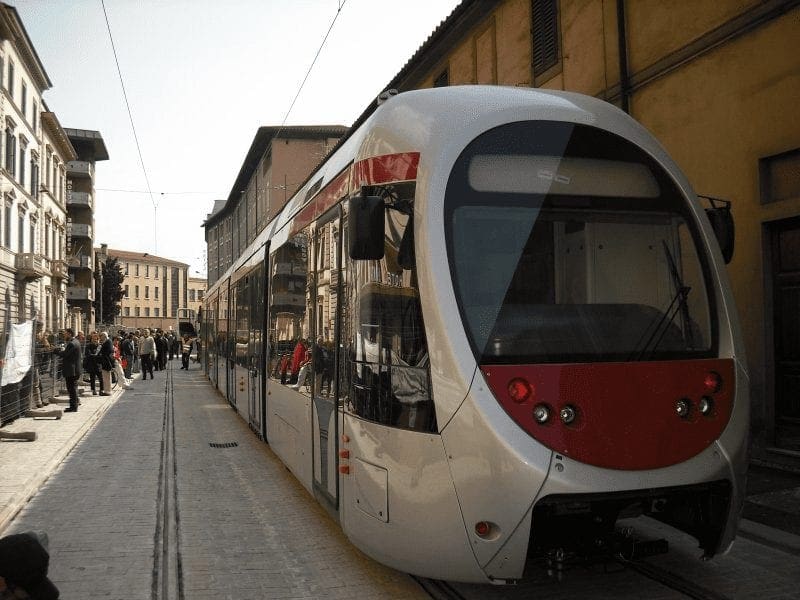
If you are air-traveling into Florence, chances are that you will be flying into the airport at Pisa (Galileo Galilei airport). Otherwise it will be the Peretola airport (Amerigo Vespucci airport). From the airport you can take the train, bus, or even a taxi to the city center. There’s also a tram from Peretola airport.
Firenze’s Santa Maria Novella station sees trains to several cities of Italy and it’s well-connected with services to and from cities in France, Germany, and Austria.
The highways of Italy also do a good job at linking the city to other parts of the country. So you could also easily get there by road, if you have to.
Once you arrive in Firenze, you will see that the city is small and extremely pedestrian-friendly. The numerous tourist attractions are in walkable distances from one another. And just in case you don’t want to walk around, taxis, buses and the trams are there to take you around.
Best time to visit
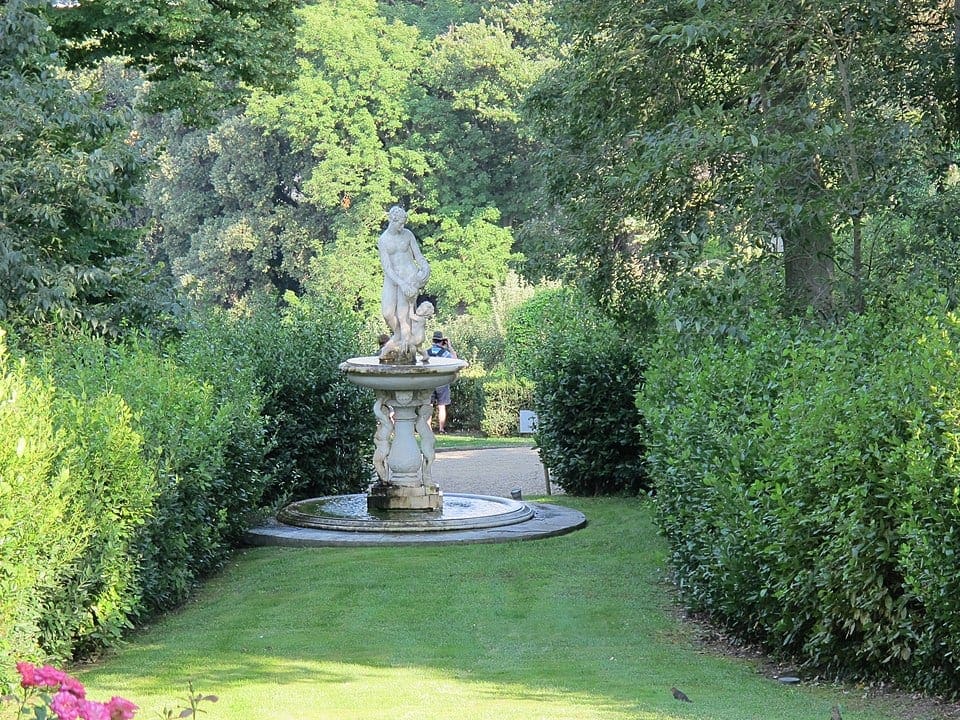
May to September is peak season. But Florence is very hot in the summer and cool and rainy in the winter. As such, fall and spring are the best seasons to be in the city. During these seasons the weather is pleasant and just right for exploring Florence on foot. And the hotel rates come down, too.
Accommodation
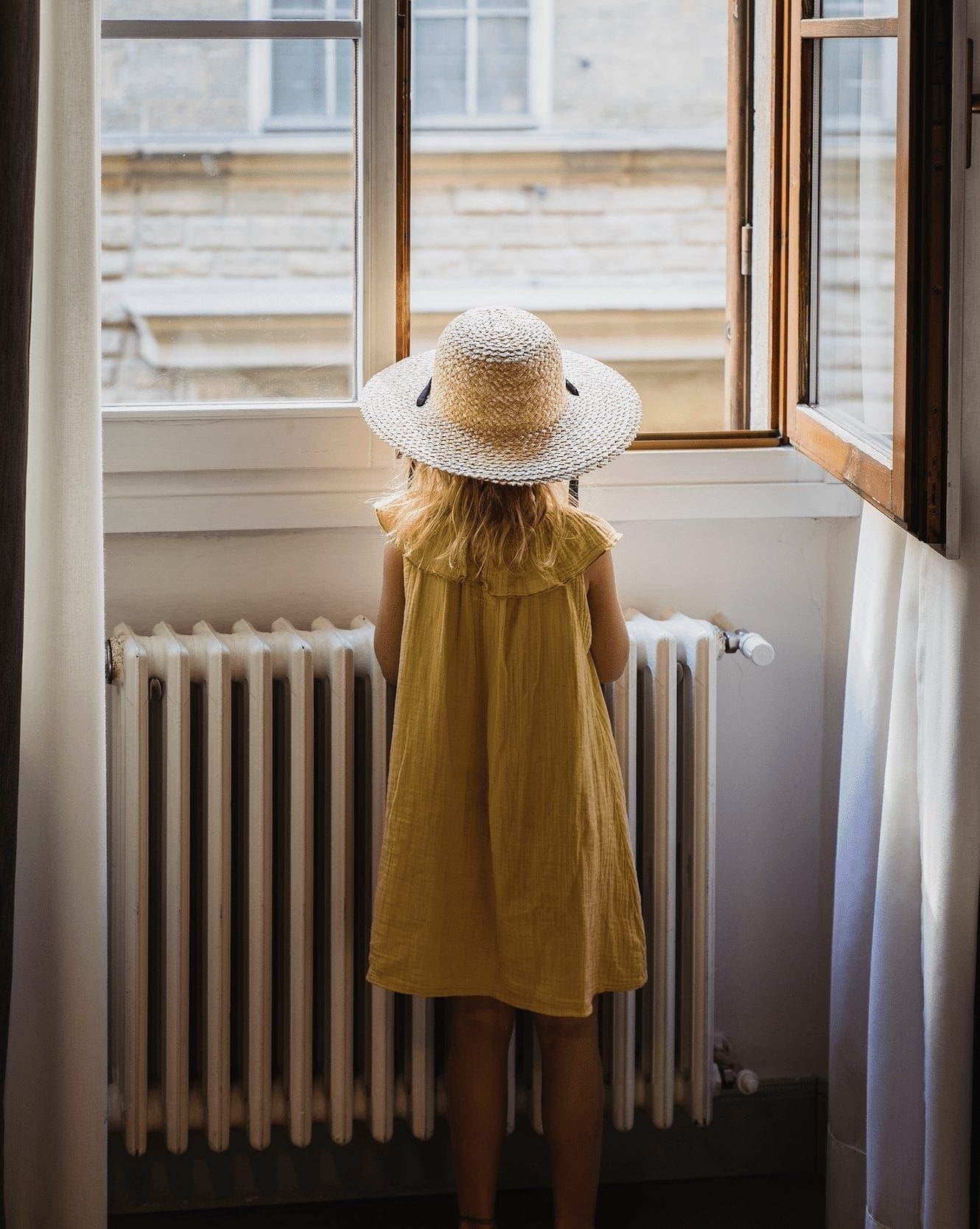
Speaking of hotels, when you’re considering accommodation in Florence, you need to choose which side of the Arno you would like to stay on. The north side of the River is where most of the historical buildings and tourist attractions are. If you don’t have much time and would like to be able to quickly catch the sights of the city, this is the side you want to stay on.
However, if you’re slow traveling and would prefer the quieter and more residential parts to be home while you’re in Florence, look for a hotel room or condo in Oltrarno – the other side of the Arno River – the charming south side.
Florence has several hostel rooms and hotel rooms offering views of the famous sights of the city. There are lots of B&Bs on both sides of the Arno River. Other options in Florence include camping near Piazzale Michelangelo or staying in a convent.
The more expensive properties are away from the center of the city and mostly closer to the airport areas.
Nearby Destinations
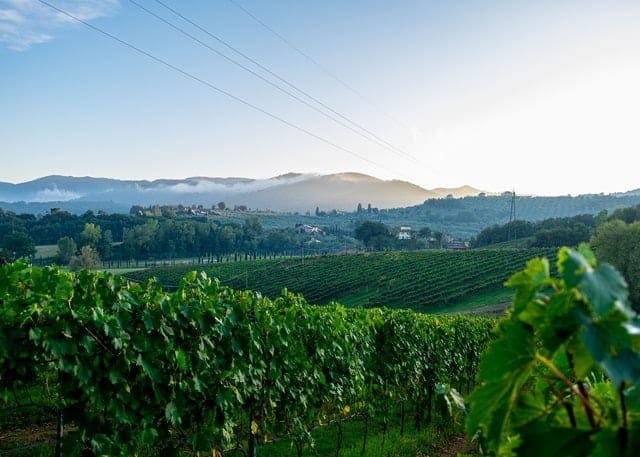
Being in Florence gives you a chance to drive into the beautiful Tuscan countryside, visit the vineyards and enjoy the wine of the area. However, I wanted to include some options in this Florence travel guide that make good day trips.
Other travels you can do from Firenze include quick trips to Siena, Pisa, Luca & Cinque Terre.